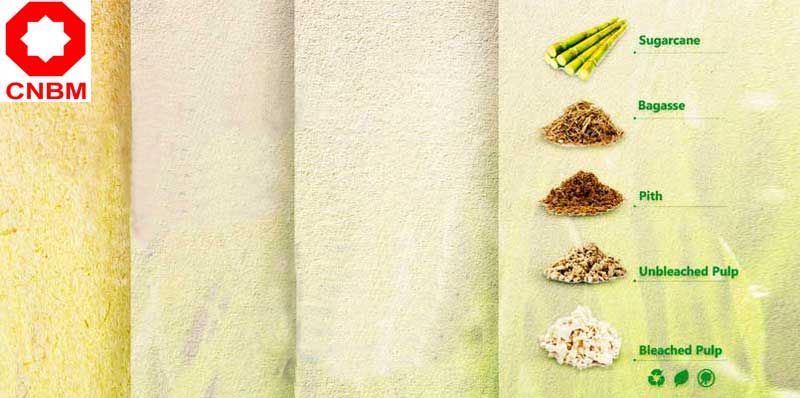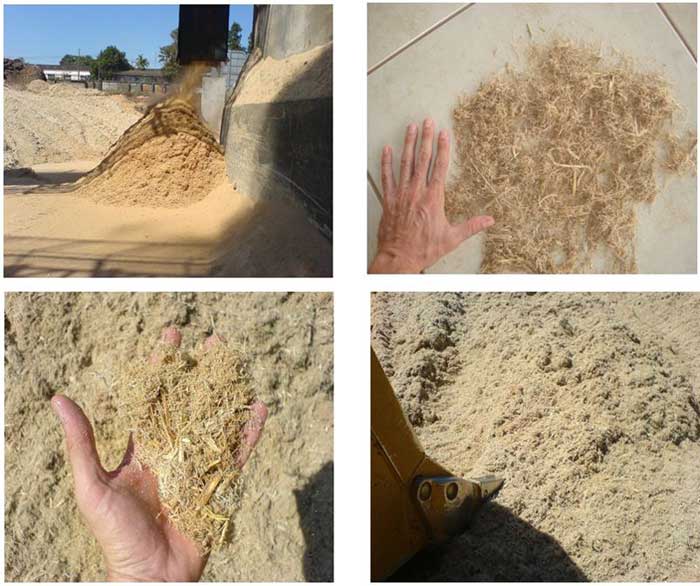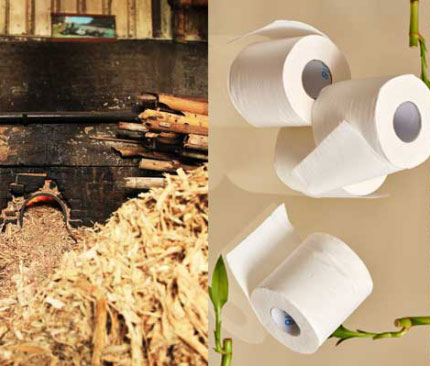Study on pulping technology of sugarcane bagasse
As we all know, the shortage of raw materials is an urgent problem facing the paper industry in our country and even the world. How to make good use of existing resources is the key to solving the problem. The raw materials for papermaking were still dominated by plant fibers in various countries around the world. Due to the different sources of plant fiber raw materials in different countries, the use of raw materials varies from country to country. Generally speaking, countries with a developed paper industry mainly use wood as raw materials or purchase large amounts of wood pulp, developing countries with insufficient wood resources make more use of their own non-wood raw materials.
Our country's forest resources are scarce, and the fiber raw materials used in the paper industry are mainly grass raw materials. Bagasse is one of the main raw materials for non-wood pulping and papermaking in southern and southwestern of our country, and it accounts for a certain proportion of the total pulp output. It is very necessary to actively explore and develop the new technology of bagasse papermaking and create a new era of papermaking using bagasse.

The properties and main characteristics of bagasse
Bagasse is a by-product of the sugar industry. It is a fibrous waste containing lignin and cellulose left after the sugarcane is squeezed out by a press. Large-scale industrial production of cane sugar produces a large amount of bagasse, and its output varies with sugarcane varieties and pressing conditions, generally 25%-30% of the sugarcane weight. Bagasse is grayish yellow to light green. It is a highly hygroscopic mixture that contains both hard fibers and soft parenchyma (cane pith). The quality of bagasse is related to the variety of sugarcane, harvest time, soil conditions and the degree of crushing of sugar mills and equipment operation.
Bagasse is rich in cellulose bagasse fiber. Its chemical composition mainly includes about 50% cellulose (C6H10 O5) n, about 25% semi-cellulose (C5H804) n, about 25% lignin and a certain amount of extracts. As a raw material for papermaking, bagasse has its particularities compared with other non-wood raw materials and wood raw materials, mainly as follows:
- The source of bagasse is concentrated, the output is large, it is an inexhaustible renewable resource, and it is more convenient to store and transport.
- Bagasse contains high total cellulose, generally 50% to 55%, which is similar to wood and higher than straw; the lignin content is medium, about 20%, lower than wood, but higher than straw, and easy to cook. The silicon content of bagasse is lower than that of rice straw and higher than that of wood. Therefore, the alkali recovery of bagasse pulping black liquor is easier than that of straw.
- Bagasse is a mixed fiber raw material with uneven structure and particles of different sizes. It is mixed with ducts, fibers and sugarcane pith tissue, and the sugarcane pith content in the bagasse is 35%-40%, which makes the bagasse extremely liquid absorbent. The presence of cane pith also brings some negative effects to the utilization of bagasse. But through proper treatment, high-quality bagasse can be obtained, which can make its pulp into paper have good uniformity, smoothness, strong ink absorption, easy cooking, easy sizing, and has broad application prospects in my country.
As the pressure of wood resources on the paper industry increases, people pay more and more attention to the development and utilization of non-wood fiber raw materials such as bagasse. Whether bagasse can solve the problem of the shortage of raw materials in the paper industry in our country and the entire world, the key is how to make bagasse papermaking have more significant social, environmental and economic benefits.

Bagasse has the advantages of abundant sources, easy pulping, low cost, smooth surface of the paper, but the pulp quality is poor, efficiency is low, and pollution is heavy. It must be overcome and perfected by improving its pulping technology and equipment.
At present, bagasse ammonia water-potassium hydroxide pulping has not been further developed and applied in my country, but because the cooking waste liquid contains nutrients required for crop growth, it can be directly used for farmland fertilization. It is a small and medium-sized pulp mill. This is a good method with wide application prospects. With the continuous in-depth research of domestic and foreign researchers, bagasse ammonia-potassium hydroxide pulping will be rapidly developed and applied.
Research progress of bagasse pulping technology
Bagasse pulping can not only use the chemical method of alkali and sulfite, but also can use solvent pulping, dust pulping and mechanical (MP), chemical mechanical (CMP), chemical thermal grinding machinery (CTMP) and other high yield pulping methods also have a good progress, but at present the main is alkaline method.
Alkali pulping is suitable for large conditions, mature technology, can produce high strength and high whiteness pulp, in the paper industry occupies a dominant position.
But the traditional alkaline cooking, pulp yield is low, most of the silicon dissolved in black liquor, resulting in high black liquor viscosity, evaporation and alkali recovery is difficult, seriously affecting the environment.
Therefore, the traditional alkali method has rarely been applied to bagasse pulping alone.
After many years of exploration and improvement, the oxygen-alkali pulping and the alkali pulping with additives appeared, and good results were obtained.

Specifications of hydrapulper
| Models | ZDSZ24 | ZDSZ25 | ZDSZ26 | ZDSZ27 | ZDSG5 | ZDSG10 | ZDSG15 | ZDSG20 |
| Nominal area (m3) | 10 | 15 | 20 | 25 | 5 | 10 | 15 | 20 |
| Treatment concentration (%) | 5-8 | 10-15 | ||||||
| Capacity (t/d) | 40-60 | 60-90 | 80-120 | 120-170 | 20-25 | 40-50 |
60-70 |
80-100 |
| Motor power | 90 | 132 | 185 | 220 | 110 | 220 | 310 | 400 |
NOTE: Part of models only, more sizes are available.

